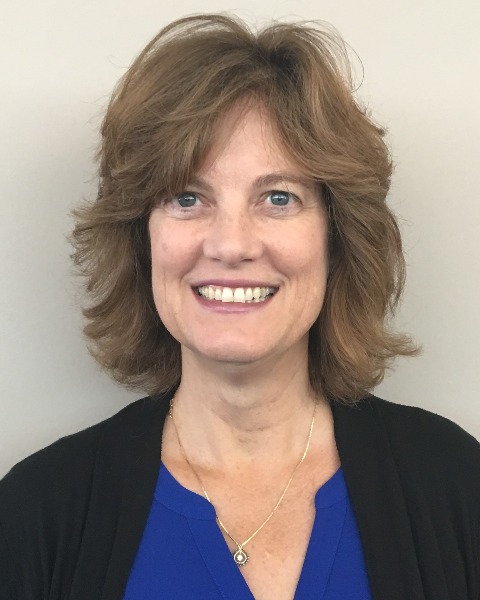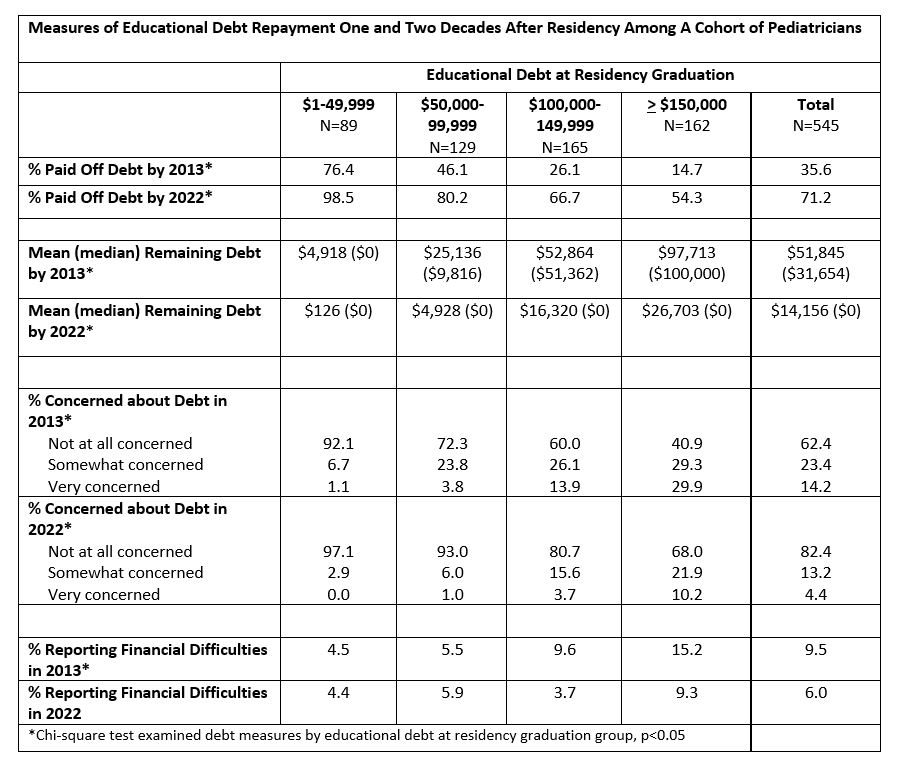Health Services Research
Session: Health Services Research 1: Workforce
280 - US Pediatrician Educational Debt – Two Decades After Residency
Saturday, May 4, 2024
3:30 PM - 6:00 PM ET
Poster Number: 280
Publication Number: 280.1477
Publication Number: 280.1477

Mary Pat Frintner, MSPH (she/her/hers)
Director, Pediatrician Surveys
American Academy of Pediatrics
Itasca, Illinois, United States
Presenting Author(s)
Background: Prior work examining pediatrician debt repayment showed that while substantial progress was made among a cohort of pediatricians, many with higher starting debt were still paying off and concerned about their remaining debt one decade after residency.
Objective: Examine debt repayment two decades after residency graduation among a cohort of US pediatricians.
Design/Methods: National, weighted 2013 and 2022 data from the AAP Pediatrician Life and Career Experience Study (PLACES) 2002-04 Residency Graduate Cohort were analyzed (n=826). Pediatricians were categorized based on their own self-reported educational debt level upon completion of residency training ($1-49,999; $50,000-99,999; $100,000-149,999; >$150,000). Chi-square tests examined experiences in debt repayment using multiple measures, including debt paid off (yes vs no), concern about debt (very, somewhat, not at all concerned), and financial difficulties (yes vs no). We further examined the relationship between starting debt level and debt being paid off in 2022 in a multivariable model including several pediatrician personal and work characteristics (sex; marital/partner status; children; race and ethnicity; medical degree; medical school location; career type-primary care, hospitalist, subspecialist; salary; part-time).
Results: Among 2002-04 residency graduates, 31.4% had no debt when they completed residency training; mean debt at graduation among those with debt was $115,000 (SD=$71,811). Two decades following graduation, pediatricians achieving complete debt repayment varied from 98.5% of those who started with <$50,000 debt to 54.3% of those who started with $150,000 debt or more. The proportion of pediatricians concerned about their debt increased with starting debt level, with 10.2% with the highest starting debt ($150,000+) still very concerned. Starting debt was strongly linked with nearly all examined measures (table). In a multivariable model, starting debt remained a strong predictor of debt being paid off ($150,000+: AOR=0.03, 95% CI=0.01-0.16; $100,000-$149,999: AOR=0.04; 95% CI=0.01-0.22; $50,000-$99,999: AOR=0.09, 95% CI=0.02-0.51). Career type was the only other factor that was significant; hospitalists were less likely than primary care pediatricians to report debt being paid off (AOR=0.25, 95% CI=0.09-0.75).
Conclusion(s): Within 2 decades following graduation, substantial progress toward debt repayment among a cohort of pediatricians was clear and < 5% were still very concerned about their debt. The findings might have implications for more recent residency graduates as a larger portion start in the higher debt categories.

